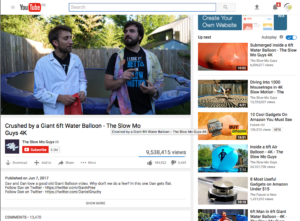Introduction
The article “Using Low-Stakes Writing Assignments to Achieve Learning Goals” describes how a professor uses low-stakes writing assignments to assess his students’ understanding his learning goals for a class. In this post, I’ve provided the main points of the article, some possible methods to use to implement the author’s ideas, and some additional resources for those who would like to implement low-stakes writing-to-learn assignments in their classes.
Main points
“Learning goals, often broad in nature, are most commonly applied at the course level. Learning objectives are statements about measurable expectations and behaviors that can contribute to the achievement of the learning goals.” “A learning objective that, when met, serves to help reach that goal is “be able to explain, in your own words, how a vector-borne pathogen is transmitted from an infected to an uninfected host.”
“Low-stakes writing assignments, which can come in many forms, are recognized as useful formative assessment tools (Angelo and Cross, 1993; DePaul Teaching Commons). Although they can be offered to students in a nongraded format, I have found that giving a small number of points helps ensure my students take the assignments seriously.”
“To promote frequent student engagement with the learning objectives, several times throughout the semester I ask my students, as individuals, to examine a set of learning objectives and from the set select the objective they find to be the most challenging.”
“After selecting their most challenging learning objective, students must imagine how it would translate to a potential essay question on an upcoming examination and write a brief explanation (one or two paragraphs) that demonstrates their understanding of the selected objective. To encourage students to pick the most challenging objective, rather than the one they can answer most easily, I tell them that I am not grading the assignment on the correctness of their paragraphs but rather on participation and effort. I also make it clear to students that these assignments, while not worth a lot of points, represent significant opportunities for them to get feedback from me on how well they are mastering the objectives and gauge their own progress in the course. I think these encouragements are the key to making these particular assignments work. I often refer to these assignments as “low-stakes learning objective paragraphs,” or simply “LOPs.” I know, not the most creative or catchy acronym.”
Ideas for Implementation
Of course, student’ LOPs could be submitted using your course management system. After the students’ writing assignment has been submitted, possibly an instructor could choose one or two students’ submissions, remove the student’s name (from the text of the document and from the file properties), and post them for other students to see.
One of the things I have found to be helpful in assessing students’ understanding of a concept is to use the Short Answer feature in Socrative. This typically only works well for short answers, not paragraph-long explanations, because students usually only have their smart phones, not their laptops with them, and typing an answer on a smart phone is tedious. The way I have done this is use the videoprojector to view the Socrative site on the screen, but initially hide the answers the students are submitting. (There is a “Hide Answers” button in Socrative. Then after all the students have submitted their answers, I show the answers and I choose a few answers to discuss. I’ll typically point out misconceptions or incorrect reasoning, as well as point out complete, accurate, and well-articulated answers.
Resources
Want to learn more about writing-to-learn? Check out Colorado State’s Writing Across the Curriculum (WAC) page “What is Writing to Learn?”
Comments
Have a question, comment, or idea on how to implement writing-to-learn that you’d like to share? Go to “leave a comment” or “leave a reply” below.
References:
Angelo, Thomas A., and K. Patricia Cross. 1993. Classroom assessment techniques: a handbook for college teachers. San Francisco: Jossey-Bass Publishers.
“Low-Stakes Assignments.” DePaul University Teaching Commons. Accessed February 03, 2017. http://resources.depaul.edu/teaching-commons/teaching-guides/feedback-grading/Pages/low-stakes-assignments.aspx.
 But what if you want to send a person to a YouTube video that is already full-screen. In other words, you don’t want them to see the comments for the video and you don’t want them to see the list of related videos found on the right side of a YouTube page. To take them to the full-screen of the YouTube video, send them to https://www.youtube.com/embed/VIDEOID where “VIDEOID” is the ID that is found at the end of the URL of the video. For instance, if you go to https://www.youtube.com/watch?v=fZI5oZ-1NdA you’ll see the video on the left side of the page and related videos on the right.
But what if you want to send a person to a YouTube video that is already full-screen. In other words, you don’t want them to see the comments for the video and you don’t want them to see the list of related videos found on the right side of a YouTube page. To take them to the full-screen of the YouTube video, send them to https://www.youtube.com/embed/VIDEOID where “VIDEOID” is the ID that is found at the end of the URL of the video. For instance, if you go to https://www.youtube.com/watch?v=fZI5oZ-1NdA you’ll see the video on the left side of the page and related videos on the right. 

